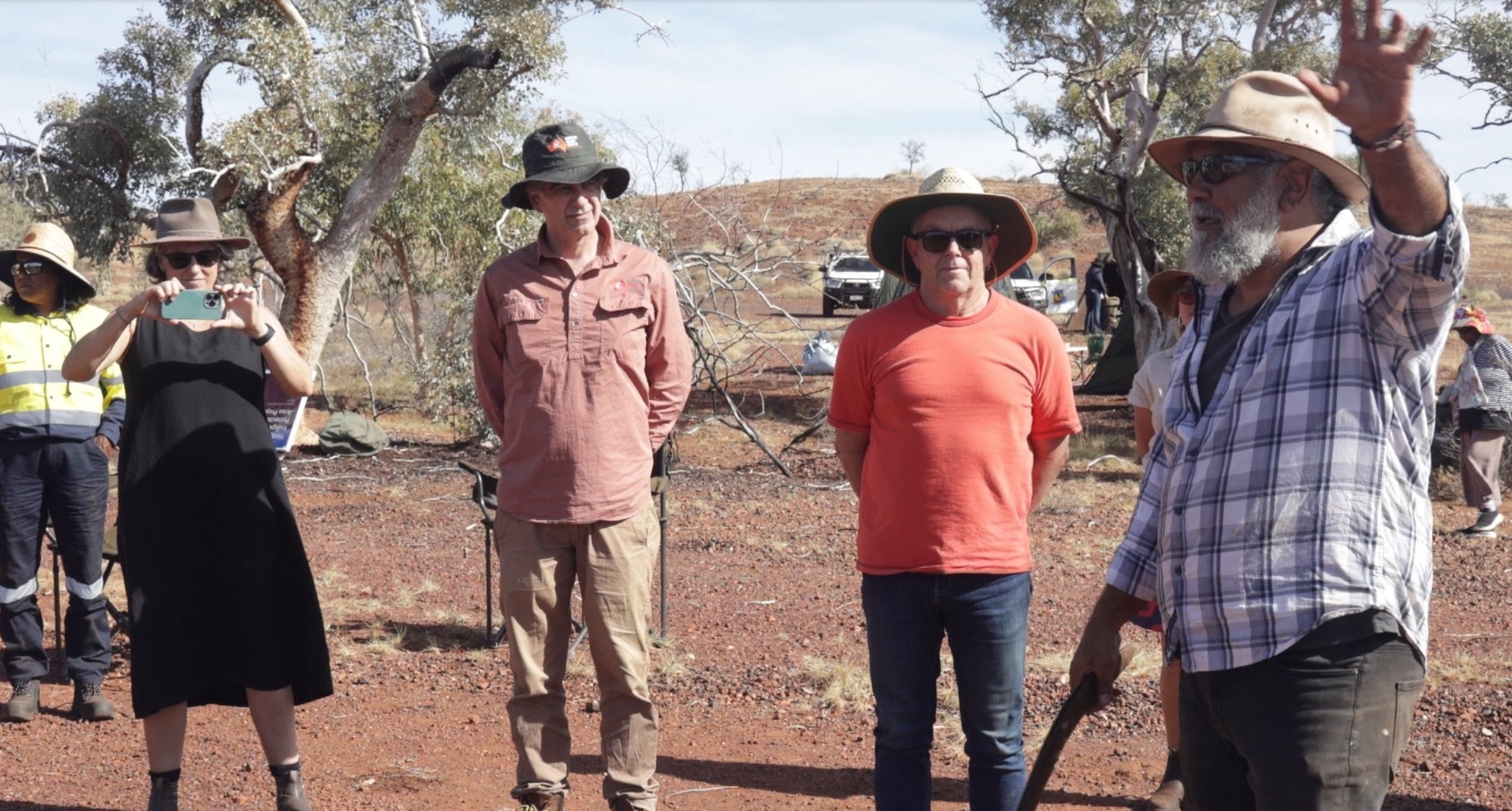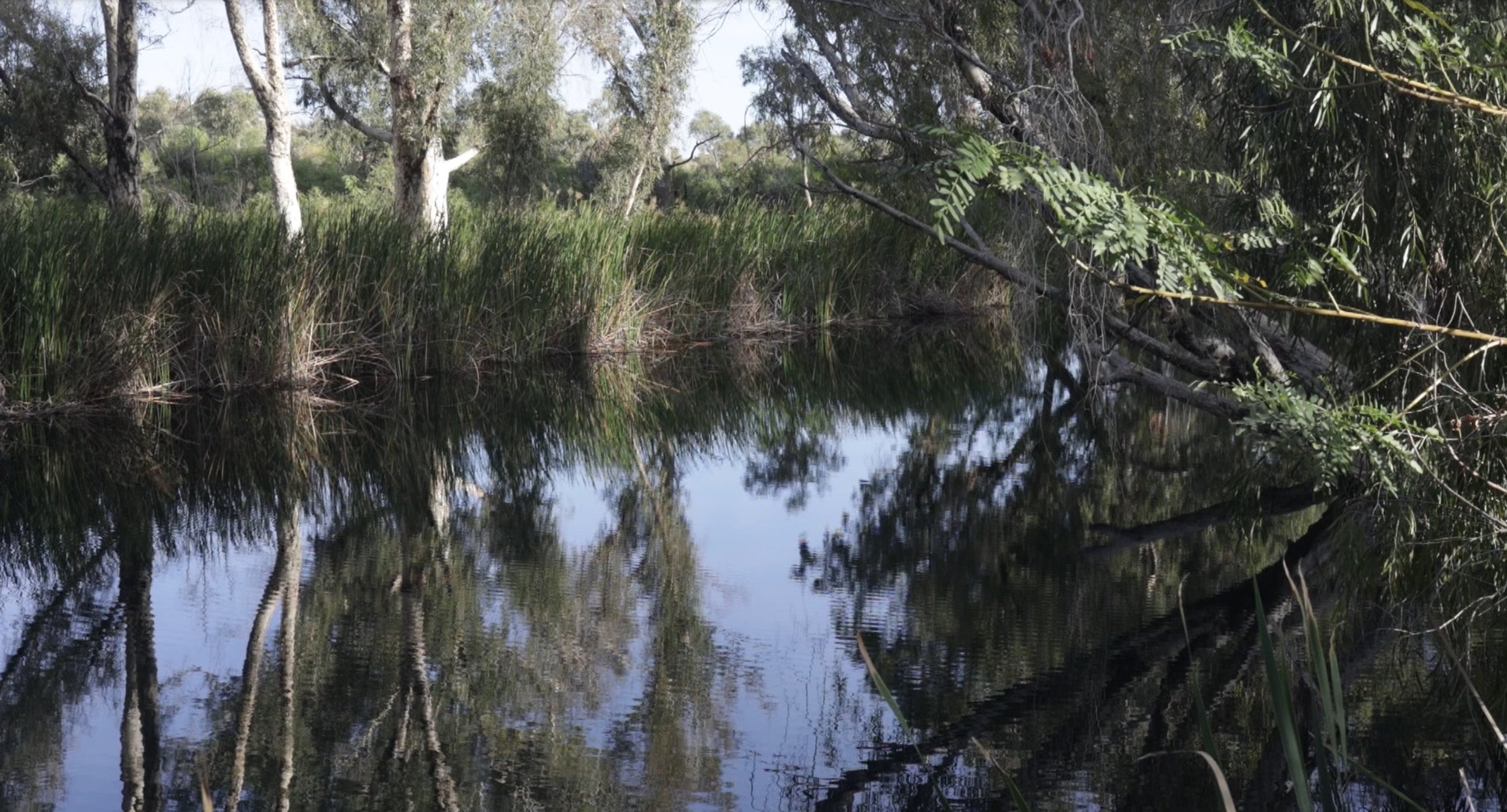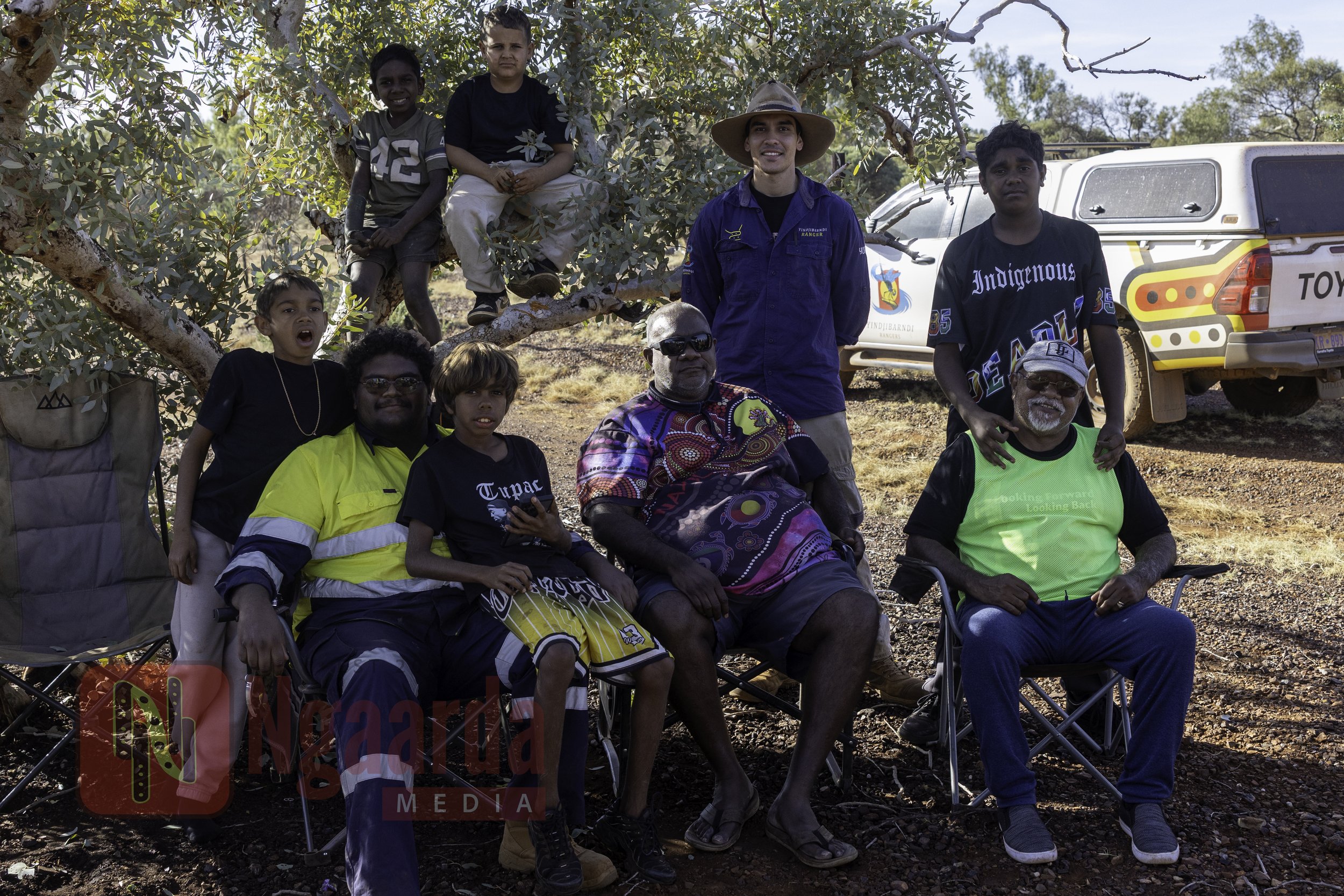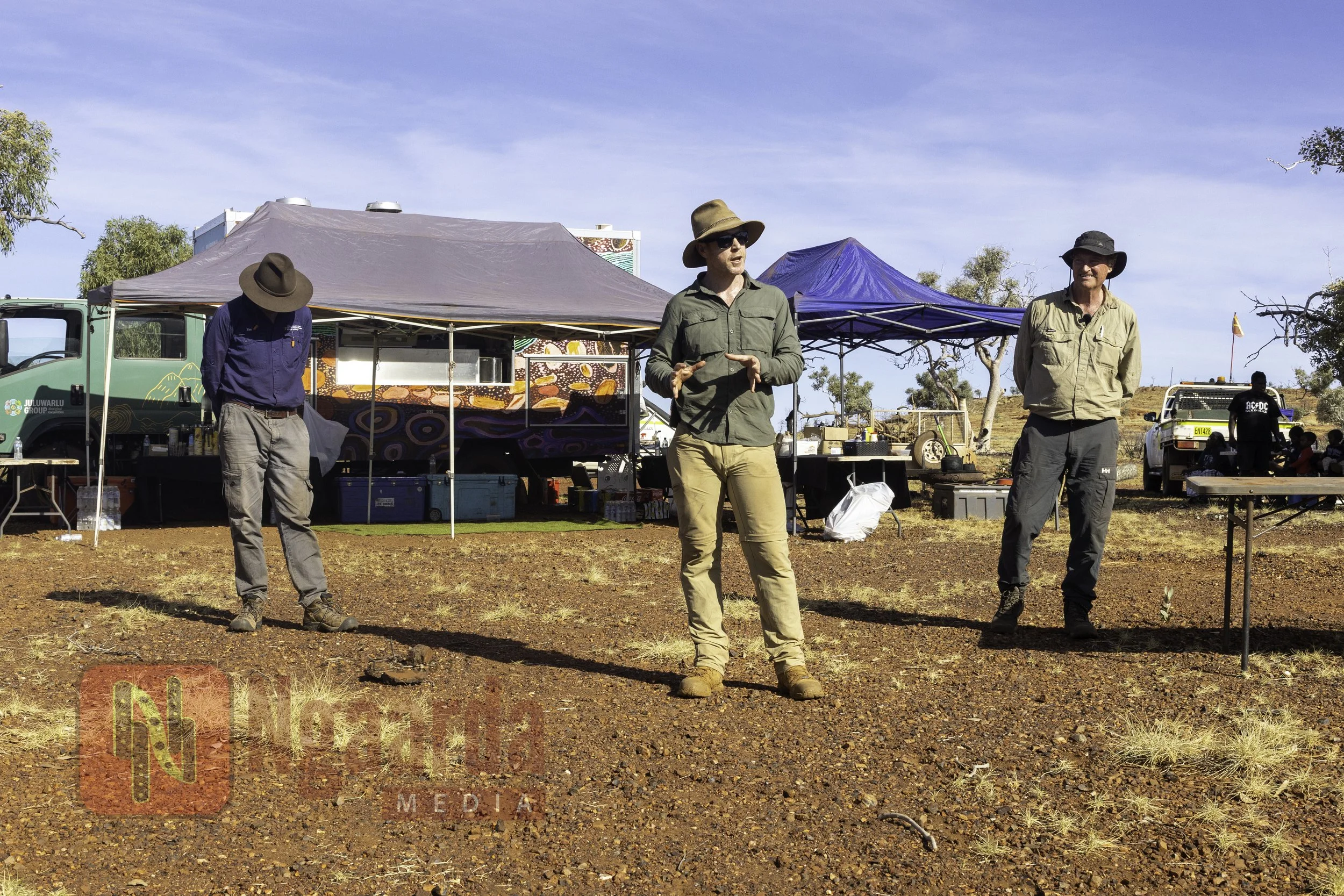YINDJIBARNDI MOB GATHER AT MILLSTREAM FOR CULTURE, COUNTRY AND FUTURE PLANNING
By Tangiora Hinaki
The Yindjibarndi people gathered at Millstream this week to discuss their country, culture, and planning for the future as part of the Indigenous Protected Area (IPA) Plan Project — a project funded by the federal government and linked to a decades-long ranger program.
Michael Woodley, CEO of the Yindjibarndi Aboriginal Corporation, says the site chosen for the meeting holds deep ancestral and cultural significance.
“We’re in Millstream, but in this particular spot here, they had a place called Warnmanha an old campsite for the Yindjibarndi people. Got some burials around here as well,” he said. “This is where the old people used to stay when Millstream Station was at its full capacity.”
Mr Woodley said the area was always a meeting place.
“My grandfathers would always come back here to talk about anything to do with country and water. They would also put on corroborees.”
The IPA project identifies and protects key cultural and ecological sites. “We’ve got some areas now identified as IPA areas,” Mr Woodley said. “It'll work hand-in-hand with our ranger program — from a cultural documentation point of view.”
That includes heritage sites, sacred locations, ecological knowledge and stories.
“It’s about getting the mob involved — elders, middle-aged, young people—and incorporating the ranger program to document those particular places from a historical point of view, geographic point of view, songs and stories and things like that.”
Mr Woodley said the Corporation is also in talks with WA Parks and Wildlife Service about reactivating the historic Millstream Homestead precinct.
“We’re talking about putting cultural information in there and reinitiating the park council so we can be involved in managing the park,” he said. “We’re also talking to the government about how we can minimise the abstraction of water from our country that feeds into the West Pilbara water scheme.”
Alongside the IPA consultation, young First Nations artists have been living and working at Millstream in cultural immersion camps, and preparing for a performance.
“We try to incorporate storytelling — the Dreamtime stories — what we call Marran-nguura,” Mr Woodley said. “Before, old people would tell those stories around the campfire. Now, we bring those stories to life through art and performance.”
Performers trained at WAAPA and other institutions are working with the Yindjibarndi community to develop and share traditional narratives in new forms. They have been performing twice a week at the Yindjibarndi culture camps.
Looking ahead, archaeological digs are planned in the area, working alongside Professor Peter Veth’s team to help carbon-date sites and back up oral history with scientific evidence.
“These digs give you an idea of a time and date when Yindjibarndi people have been on this area,” Mr Woodley said. “Our old people have always been here — we’ve always said this is our country. But it’s good to sometimes put some science behind that too.”




